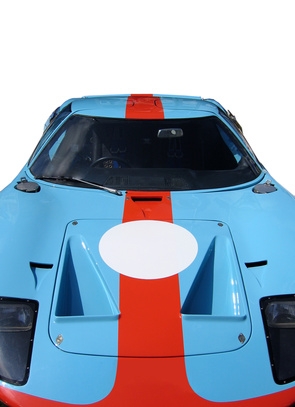
Augmenting a car's external shape to more efficiently cut through the airstream isn't a new practice; in the late 1920s, inventor Buckminster Fuller brought aerodynamics to the public eye with his wild three-wheeled Dymaxion. Since then, designers have paid increasing attention to the correlation between air and performance, culminating in twin peaks of development with the "wing" race cars of the 1980s and "streamline" autos of the 1990s. Roof scoops are children of the '80s era, and are usually more for looks than performance.
The three basic properties of air that concern car aerodynamics are mass, elasticity and viscosity. "Mass" means that the air has weight, and thus momentum (kinetic energy) while moving. "Elasticity" means that air can compress or expand, meaning that it can store or release potential energy. "Viscosity" means that air will resist "cutting" (shearing), so it will tend to stick to surfaces in a boundary layer before separating. This boundary layer causes what is known as "skin drag," which is the direct result of air sticking to the car as it tries to pass through.
The faster a car moves, the thicker the boundary layer gets. The boundary layer is essentially stagnant air that acts as a sort of lubricant, allowing the surrounding air to pass without disturbance. As your car punches through the air, a boundary layer sticks to the hood and gets very thick over the windshield (which experiences very high air pressures at speed), and then suddenly thins out as it passes over the roof. Roof scoops take advantage of this thin point in the boundary layer to draw air into the car's passenger compartment or heat exchangers.
Air scoops come in two basic types: external and recessed. The external ("pop-up") roof scoops popularized by world rally racing pull fast-moving air from past the boundary layer; they do flow a lot of air, but they also cause a great deal of high-speed drag. Recessed ("sunken") scoops, also known as NACA ducts (National Advisory Committee for Aeronautics, the precursor to NASA) can actually flow more than a pop-up scoop, but only at very high speeds. NACA ducts use only slow-moving boundary-layer air, so they cause almost no drag whatsoever.
The large roof scoops used on world rally cars and race cars are usually there to provide fresh air for the driver. After all, most race cars use plastic windows sealed against the doors, and air conditioning isn't an option. Race cars often lack the sort of floor and firewall insulation that keep engine heat out of most other types of cars.
The only other reasons for a roof scoop are to cool rear-mounted heat exchangers (radiators) or to provide intake air for a rear or mid-mounted engine. In almost every case, a large NACA duct will provide more than sufficient airflow without increasing drag, raising the boundary air thickness or causing turbulent airflow. Tall boundary layers and turbulent airflow saps kinetic energy from the airstream, which means there's less to push down on the rear wing. In this way, a too-large or badly engineered roof scoop can actually destroy a car's high-speed stability.